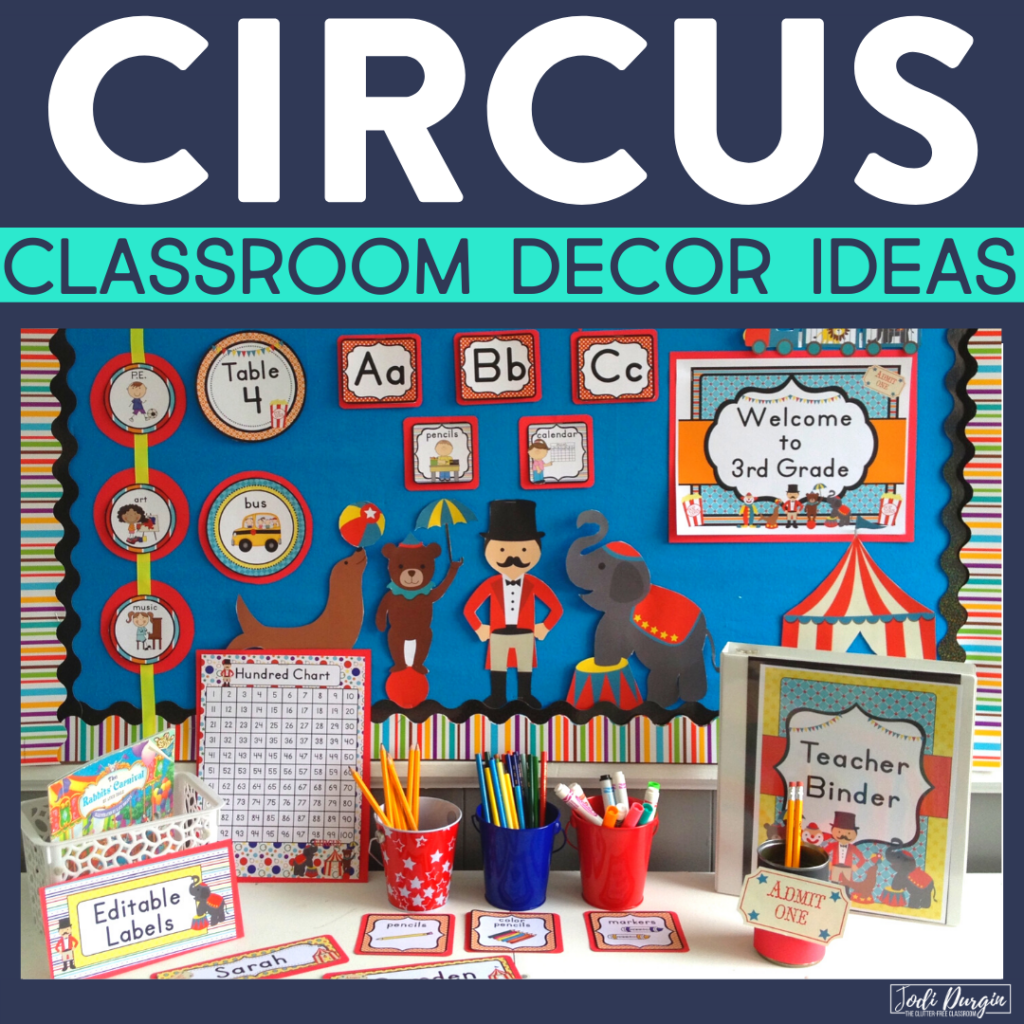As a teacher, I always strive to create an engaging atmosphere that captivates my students’ imaginations. One of the most successful themes I’ve incorporated into my classroom is the circus theme. It’s vibrant, colorful, and filled with elements that stimulate creativity and enthusiasm for learning. In this article, I’ll share my personal experiences, practical tips, and a comprehensive guide to implementing circus-themed classroom decor. Whether you’re looking to revamp your classroom or simply add a touch of whimsy, this guide has something for everyone!
Why Choose a Circus Theme for Your Classroom?
The circus theme is not just visually appealing; it also offers a unique opportunity to intertwine fun with education. Here are some compelling reasons to consider this theme:
- Stimulating Colors: Bright colors help in creating an energetic environment that keeps students engaged.
- Flexibility: The circus theme can be adapted for various subjects, from math to storytelling.
- Interactive Learning: Incorporating games and activities based on the circus can enhance collaborative learning.
Key Elements of Circus Theme Classroom Decor
When designing your circus-themed classroom, consider incorporating these key elements:
Carnival Colors and Patterns
Utilize a palette of vibrant reds, yellows, blues, and whites to mimic the festive atmosphere of a circus. Striped patterns, polka dots, and checkered designs can be used across bulletin boards, rugs, and wall art.
Decorative Banners and Posters
Hang posters of circus performers, animals, and iconic imagery. This not only beautifies the classroom but also provides excellent visual aids for discussions and projects.
Interactive Stations
Create areas dedicated to different circus activities, such as a “Ringmaster Reading Corner” or a “Tightrope Math Challenge.” These interactive stations encourage students to learn through play.
How to Implement Circus Theme Classroom Decor
Implementing this theme requires thoughtful planning and creativity. Here’s a step-by-step guide:
Step 1: Choose a Color Scheme
Select a color scheme that reflects the circus atmosphere. Combine bright primary colors with softer tones to create a harmonious yet exciting environment.
Step 2: Use Wall Decorations Wisely
Add wall stickers, murals, and hanging garlands to make the walls pop. You can also use fabric backdrops for bulletin boards and learning centers.

Step 3: Designate Learning Zones
Break your classroom into zones that reflect different circus acts or themes. For example, a “Clown Craft Corner” or a “Animal Encounter Science Station.”
Step 4: Involve Students in the Decoration
Encourage your students to collaborate in creating some of the decor. This could be through art projects, where they can design their own circus characters or posters.

Tips for Maintaining the Theme Throughout the Year
To keep the circus theme fresh and engaging, consider these maintenance tips:
Regularly Rotate Decor
Change up decorations periodically to reflect different circus acts or seasons. For instance, during Halloween, you could include spooky circus elements.
Integrate Theme into Lessons
Utilize the theme in your lesson plans. Incorporate circus-related materials in math, literature, and science classes for more engaging learning experiences.

Feedback and Improvements
Ask your students for feedback on the theme. Their input can help you refine and enhance the decor, making it more appealing to them.
Pros and Cons of Circus Theme Classroom Decor
| Pros | Cons |
|---|---|
| Creates an engaging learning environment. | Can be overwhelming if overdone. |
| Encourages creativity and interactive learning. | Possibly requires more work to maintain decor. |
| Flexible for various subjects and activities. | May not suit all educational philosophies. |

Personal Experience: My Journey with Circus Classroom Decor
When I decided to switch to a circus theme, I was initially overwhelmed with the options available. However, as I started experimenting with different elements, I quickly discovered a newfound joy in teaching. The first few weeks were filled with laughter, as my students engaged with the decor—creating a lively atmosphere that motivated everyone. I remember one particular project where my students created their own circus acts, complete with props, which not only encouraged teamwork but also ignited their creative spirits.
FAQs about Circus Theme Classroom Decor
1. What should I include in my circus theme classroom decor?
Consider including bright colors, circus-themed wall art, interactive learning stations, and student-created projects to enhance engagement.
2. How do I ensure the theme is educational?
Integrate the theme into your lessons by tying circus elements to educational concepts in math, science, and literature.
3. Can I adapt the circus theme for older students?
Absolutely! You can create a more sophisticated approach by using subtler circus elements and focusing on historical or literary connections to the circus.
4. How often should I update the decor?
It’s a good idea to refresh your decor every quarter or season to maintain excitement and engagement.

Conclusion
A circus theme classroom is more than just fun decor; it’s a vibrant educational strategy that fosters creativity, collaboration, and excitement. By implementing a circus theme, you’re not only transforming your classroom visually but also creating a space where students can thrive. So, take the plunge, gather your supplies, and get ready to embark on a circus adventure in your classroom!